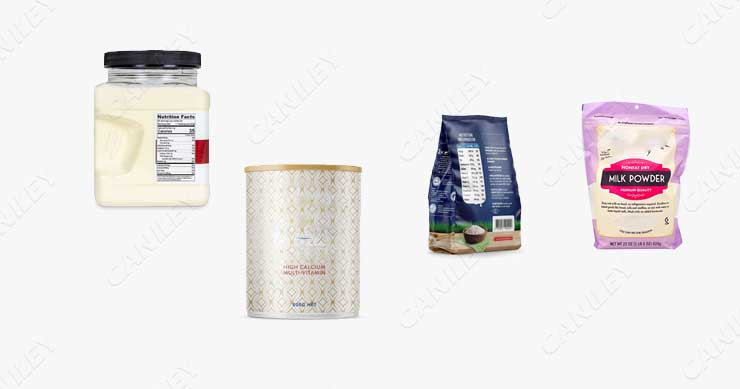Milk powder is a popular dairy product that is widely used in many industries and households. It is made by dehydrating milk and removing its water content, resulting in a powder form that is easier to store, transport, and use. However, choosing the right packaging for milk powder is crucial in ensuring its quality, shelf life, and safety. There are many types of milk powder packaging, but which packaging is best for milk powder?

Paper-based packaging:
Paper-based packaging is a popular choice for milk powder, especially for smaller quantities. It is lightweight, recyclable, and biodegradable, making it an eco-friendly option. Moreover, it can be printed with attractive graphics and information about the product, which can help increase its appeal and marketability.
However, paper-based packaging has some limitations. It is not as durable as other packaging types, and it is susceptible to tearing, moisture, and odors. Therefore, it may not be suitable for long-term storage or shipping, especially in humid or wet environments.
Plastic-based packaging:
Plastic-based packaging is another common choice for milk powder, especially for larger quantities. It is durable, lightweight, and moisture-resistant, which makes it ideal for long-term storage and shipping. Moreover, it can be made in different shapes and sizes, which can provide more flexibility in packaging design and branding.
However, plastic-based packaging has some drawbacks. It is not biodegradable, which can contribute to environmental pollution and waste. Moreover, it may not be as visually appealing or easy to recycle as paper-based packaging.
Metal-based packaging:
Metal-based packaging, such as tin cans, is a traditional packaging type for milk powder. It is sturdy, airtight, and light-proof, which can help preserve the product’s quality and freshness. Moreover, it can be decorated with attractive graphics and branding, which can enhance its shelf appeal and customer recognition.
However, metal-based packaging has some limitations. It is not as flexible or customizable as plastic or paper-based packaging, and it can be heavy and expensive to transport. Moreover, it may not be as eco-friendly or easily recyclable as other packaging types.
Composite packaging:
Composite packaging, such as laminated paper and plastic or metal and plastic, is a newer packaging type for milk powder. It combines the advantages of different materials, such as the durability of plastic and the eco-friendliness of paper, to create a more sustainable and efficient packaging solution. Moreover, it can be customized to meet specific product and market requirements, such as barrier properties, graphic design, and branding.
However, composite packaging may have some limitations. It can be more complex and expensive to produce than single-material packaging, and it may require specialized recycling processes. Moreover, it may not be suitable for all products and applications, depending on their specific characteristics and requirements.
In conclusion, choosing the right packaging for milk powder depends on various factors, such as product characteristics, market requirements, and environmental considerations. Each packaging type has its advantages and limitations, and manufacturers should evaluate them carefully before making a decision. Moreover, consumers can play a role in promoting sustainable packaging by choosing products with eco-friendly packaging and recycling them properly.
